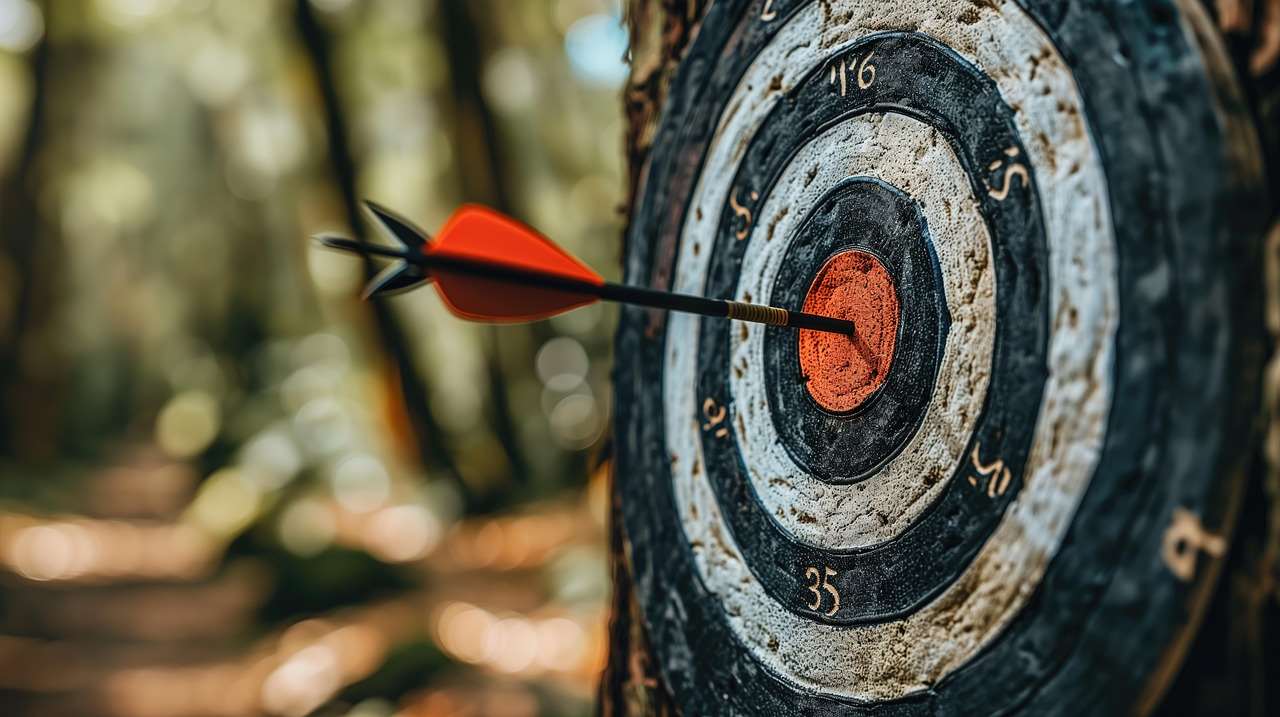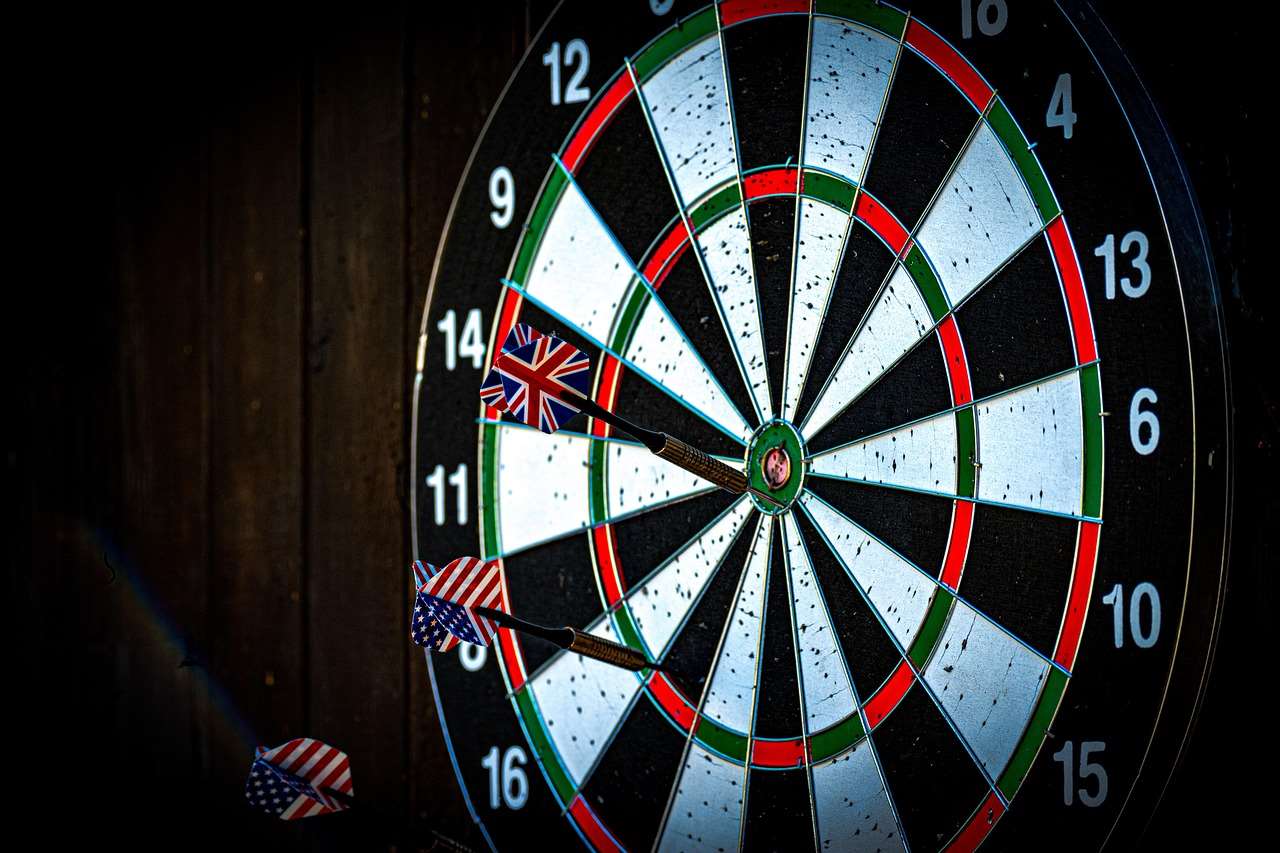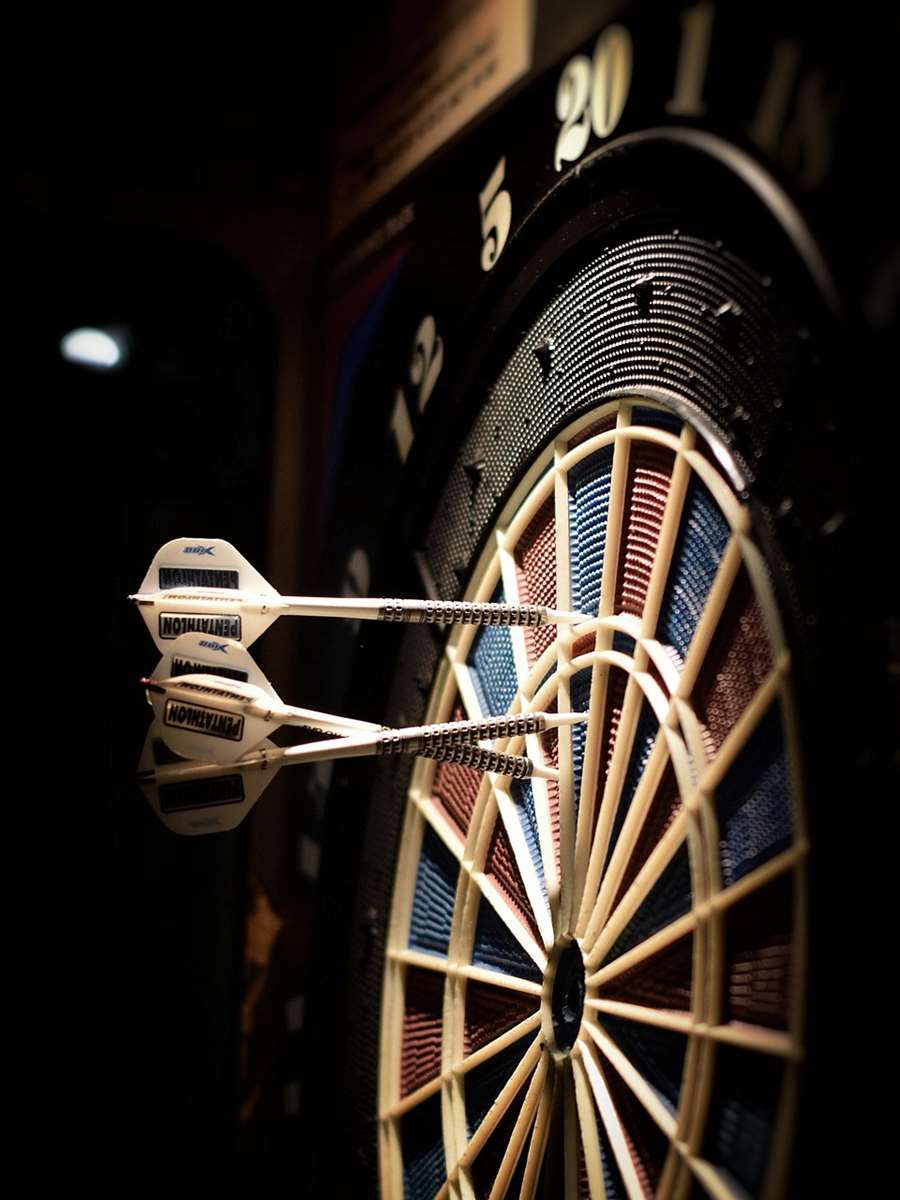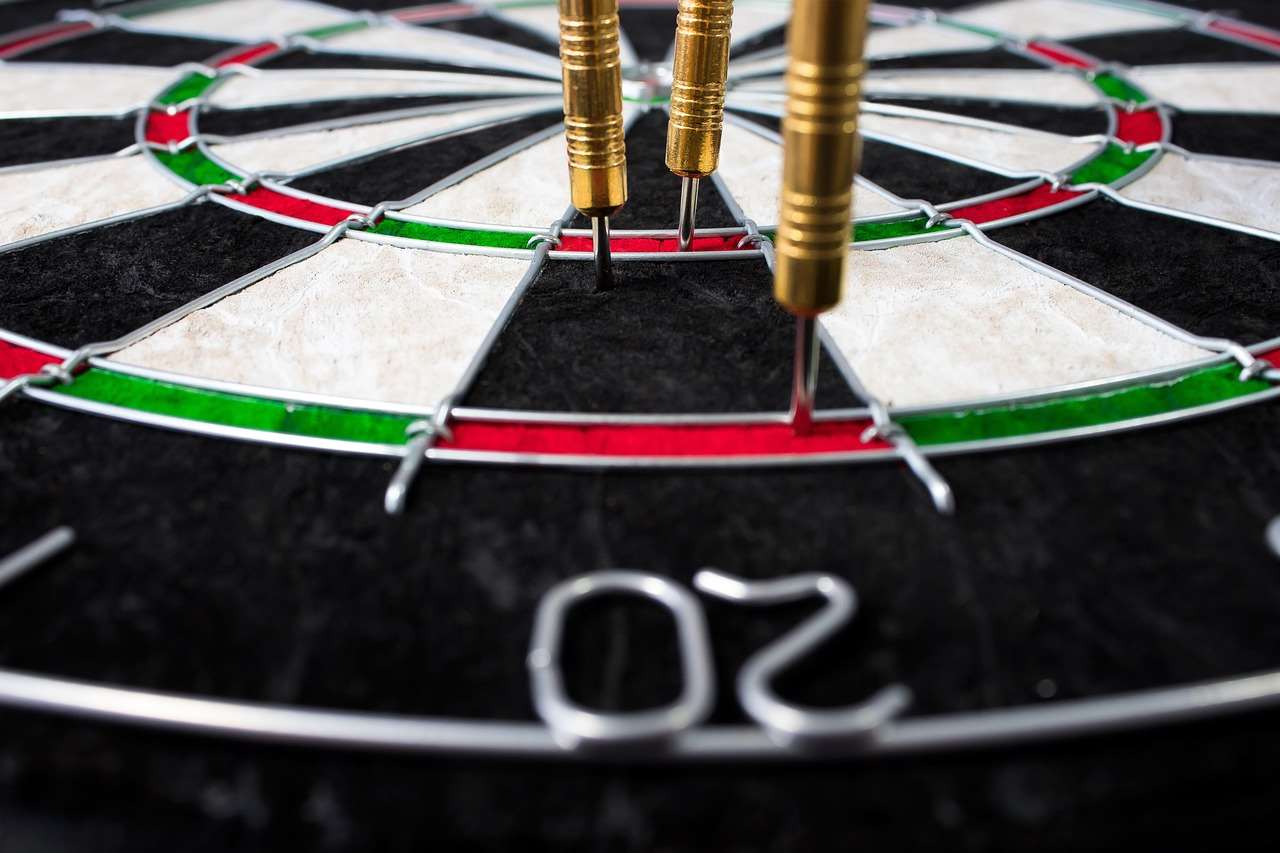Creating inclusive darts event signage ensures that everyone, regardless of their background or abilities, feels welcome and can easily navigate the venue and participate in the event. This article will explore the key elements of designing and implementing effective and inclusive signage for darts events, from accessibility considerations to clear communication strategies, creating a positive experience for all attendees.
⚠️ Still Using Pen & Paper (or a Chalkboard)?! ⚠️
Step into the future! The Dart Counter App handles all the scoring, suggests checkouts, and tracks your stats automatically. It's easier than you think!
Try the Smart Dart Counter App FREE!Ready for an upgrade? Click above!
Why Inclusive Darts Event Signage Matters
Inclusive signage goes beyond simply providing directions; it actively fosters a welcoming and accessible environment. It demonstrates a commitment to diversity and inclusion, making your darts event more enjoyable for a wider range of participants and spectators. By taking the time to design and implement thoughtful signage, you can proactively address potential barriers and ensure that everyone feels valued and respected.
Ignoring the needs of diverse attendees can lead to confusion, frustration, and even exclusion. Consider individuals with visual impairments, hearing difficulties, mobility limitations, or those who speak different languages. Addressing these diverse needs through effective signage is crucial for creating a truly inclusive darts experience.
Benefits of Inclusive Signage:
- Enhanced accessibility for all attendees
- Improved navigation and wayfinding
- Increased participation from diverse groups
- Positive event experience and enhanced reputation
- Reduced reliance on staff for assistance

Key Considerations for Designing Inclusive Darts Event Signage
Designing effective inclusive darts event signage requires careful planning and attention to detail. Here are some key considerations to keep in mind:
1. Accessibility
Accessibility is paramount. Ensure your signage meets the needs of individuals with disabilities, including:
- Visual Impairments: Use large, high-contrast fonts. Provide tactile signage with braille for key areas like restrooms and exits. Consider audio cues for directional signage.
- Mobility Limitations: Ensure signage is positioned at accessible heights and locations, avoiding obstructions. Provide clear pathways and ramps with appropriate signage.
- Hearing Impairments: Utilize visual cues and symbols to convey information. Consider incorporating visual alerts for important announcements.
Remember to comply with relevant accessibility standards and regulations, such as the Americans with Disabilities Act (ADA).
2. Clarity and Simplicity
Keep your signage clear, concise, and easy to understand. Avoid using jargon or overly complicated language. Use universal symbols and pictograms to convey information quickly and effectively.
- Font Choice: Opt for clear, sans-serif fonts like Arial or Helvetica.
- Font Size: Use a large enough font size that is easily readable from a distance.
- Contrast: Ensure sufficient contrast between the text and background colors.
- Language: Use clear and simple language, avoiding technical terms or slang. Consider providing signage in multiple languages if your event attracts a diverse audience.
3. Placement and Visibility
Strategic placement is critical for effective signage. Place signs in high-traffic areas where they are easily visible. Ensure they are well-lit and free from obstructions. Consider the sightlines of attendees in wheelchairs or those with mobility aids.
Think about the entire journey of attendees, from arrival to departure. Provide clear signage at key decision points, such as entrances, exits, restrooms, food and beverage areas, and the dartboard area itself. Proper placement aids in darts event navigation.

Implementing Inclusive Darts Event Signage: A Step-by-Step Guide
Now that you understand the key considerations, let’s look at a practical step-by-step guide for implementing inclusive darts event signage:
- Assess Your Venue: Conduct a thorough assessment of your venue to identify potential barriers and accessibility challenges. Consider the needs of diverse attendees, including those with disabilities, language differences, and cultural backgrounds.
- Develop a Signage Plan: Create a comprehensive signage plan that outlines the types of signs needed, their placement, and their content. Consider using a map or floor plan to visualize the signage layout.
- Design Your Signage: Design your signage based on the principles of accessibility, clarity, and simplicity. Use large, high-contrast fonts, universal symbols, and clear language.
- Produce Your Signage: Use high-quality materials that are durable and weather-resistant. Ensure your signage is professionally produced and visually appealing.
- Install Your Signage: Install your signage in strategic locations where it is easily visible and accessible. Ensure it is properly secured and free from obstructions. Consider darts event safety when placing signs.
- Evaluate and Improve: After the event, gather feedback from attendees and staff to evaluate the effectiveness of your signage. Make adjustments as needed to improve accessibility and clarity for future events. Consider incorporating feedback on fan culture at live darts events.
Remember to involve diverse stakeholders in the planning and implementation process. Consult with disability advocacy groups, language experts, and cultural organizations to ensure your signage meets the needs of your audience.
Beyond the Basics: Advanced Tips for Inclusive Darts Event Signage
To truly elevate your inclusive darts event signage, consider these advanced tips:
- Wayfinding Systems: Implement a comprehensive wayfinding system that uses consistent colors, symbols, and numbering to guide attendees through the venue.
- Interactive Signage: Consider using interactive signage, such as touch screen kiosks or QR codes, to provide additional information and accessibility features. These could provide details on Hospitality Packages Darts Events.
- Digital Signage: Utilize digital signage to display dynamic content, such as event schedules, announcements, and real-time information. Ensure the digital signage is accessible to individuals with visual impairments by providing audio descriptions or screen reader compatibility.
- Personalized Signage: Consider offering personalized signage options, such as name badges with preferred pronouns, to create a more inclusive and welcoming environment.
- Temporary Signage: Don’t forget temporary signage for specific events or activities. Ensure temporary signs are just as accessible and clear as permanent signage.
By going beyond the basics, you can create a truly exceptional experience for all attendees and demonstrate your commitment to diversity and inclusion. This contributes positively to the overall Darts Culture And Community Guide.

Examples of Inclusive Darts Event Signage in Action
Let’s look at some real-world examples of inclusive darts event signage that demonstrate best practices:
- Large, High-Contrast Signage: A sign with a large font size and a high contrast color scheme (e.g., white text on a dark blue background) indicating the location of the restrooms. The sign also includes braille for individuals with visual impairments.
- Universal Symbols: A sign using the international symbol for accessibility (the wheelchair symbol) to indicate accessible entrances and restrooms.
- Multi-Lingual Signage: A sign providing directions to the registration desk in English, Spanish, and French.
- Tactile Maps: A tactile map of the venue providing a raised representation of the layout and key features for individuals with visual impairments.
- Audio Announcements: Clear and concise audio announcements providing important information, such as event schedules and safety instructions.
These examples demonstrate how thoughtful design and implementation can make a significant difference in creating a welcoming and accessible environment for all attendees. Thinking about the Experience Attending Live Darts for all is critical.
Training Staff on Inclusive Darts Event Signage
Having excellent signage is only part of the solution. It’s equally important to train your staff on how to use the signage effectively and assist attendees with wayfinding and accessibility needs. Here are some key training points:
- Signage Awareness: Ensure staff are familiar with the location and purpose of all signage throughout the venue.
- Accessibility Awareness: Train staff on basic accessibility principles and how to assist individuals with disabilities.
- Communication Skills: Equip staff with effective communication skills to interact with diverse attendees, including those who may have language barriers or communication difficulties.
- Problem-Solving Skills: Train staff on how to handle common issues related to signage and wayfinding, such as replacing damaged signs or providing alternative directions.
- Empathy and Respect: Emphasize the importance of treating all attendees with empathy and respect, regardless of their background or abilities.
Regular training sessions can help ensure that your staff are equipped to provide excellent customer service and support for all attendees.

Measuring the Success of Your Inclusive Darts Event Signage
How do you know if your inclusive darts event signage is truly effective? Here are some ways to measure its success:
- Attendee Feedback: Conduct surveys or focus groups to gather feedback from attendees about their experience with the signage. Ask specific questions about clarity, accessibility, and ease of use.
- Staff Observations: Ask staff to observe attendee behavior and note any common issues related to wayfinding or accessibility.
- Website Analytics: If you have a website with venue maps or information, track website analytics to see how many people are accessing these resources.
- Social Media Monitoring: Monitor social media for mentions of your event and look for any comments or complaints related to signage or accessibility.
- Incident Reports: Track any incident reports related to wayfinding or accessibility issues.
By regularly measuring the success of your signage, you can identify areas for improvement and ensure that your events are becoming increasingly inclusive over time.

Future Trends in Inclusive Darts Event Signage
The field of inclusive darts event signage is constantly evolving. Here are some future trends to watch out for:
- Smart Signage: The integration of smart technology into signage, such as interactive displays, personalized content, and real-time information updates.
- Augmented Reality (AR): The use of AR to overlay digital information onto the physical environment, providing attendees with enhanced wayfinding and accessibility features.
- Artificial Intelligence (AI): The application of AI to analyze attendee behavior and optimize signage placement and content.
- Sustainable Signage: The use of sustainable materials and production methods to reduce the environmental impact of signage.
- Universal Design Principles: A greater emphasis on universal design principles, which aim to create products and environments that are usable by all people, to the greatest extent possible, without the need for adaptation or specialized design.
By staying abreast of these trends, you can ensure that your inclusive darts event signage remains cutting-edge and effective in meeting the evolving needs of your attendees. These insights help improve Guide To Attending Darts Events.
Conclusion
Creating inclusive darts event signage is an essential step towards fostering a welcoming and accessible environment for all participants and spectators. By prioritizing accessibility, clarity, and strategic placement, you can ensure that everyone feels valued and respected. Remember to train your staff, measure the success of your signage, and stay abreast of future trends. By implementing these strategies, you can enhance the overall event experience and demonstrate your commitment to diversity and inclusion. Take the next step and assess your current signage – identify areas for improvement and start planning how to create a more inclusive and welcoming atmosphere at your next darts event. Consider engaging a professional signage company specializing in accessibility for expert guidance and support.
Hi, I’m Dieter, and I created Dartcounter (Dartcounterapp.com). My motivation wasn’t being a darts expert – quite the opposite! When I first started playing, I loved the game but found keeping accurate scores and tracking stats difficult and distracting.
I figured I couldn’t be the only one struggling with this. So, I decided to build a solution: an easy-to-use application that everyone, no matter their experience level, could use to manage scoring effortlessly.
My goal for Dartcounter was simple: let the app handle the numbers – the scoring, the averages, the stats, even checkout suggestions – so players could focus purely on their throw and enjoying the game. It began as a way to solve my own beginner’s problem, and I’m thrilled it has grown into a helpful tool for the wider darts community.